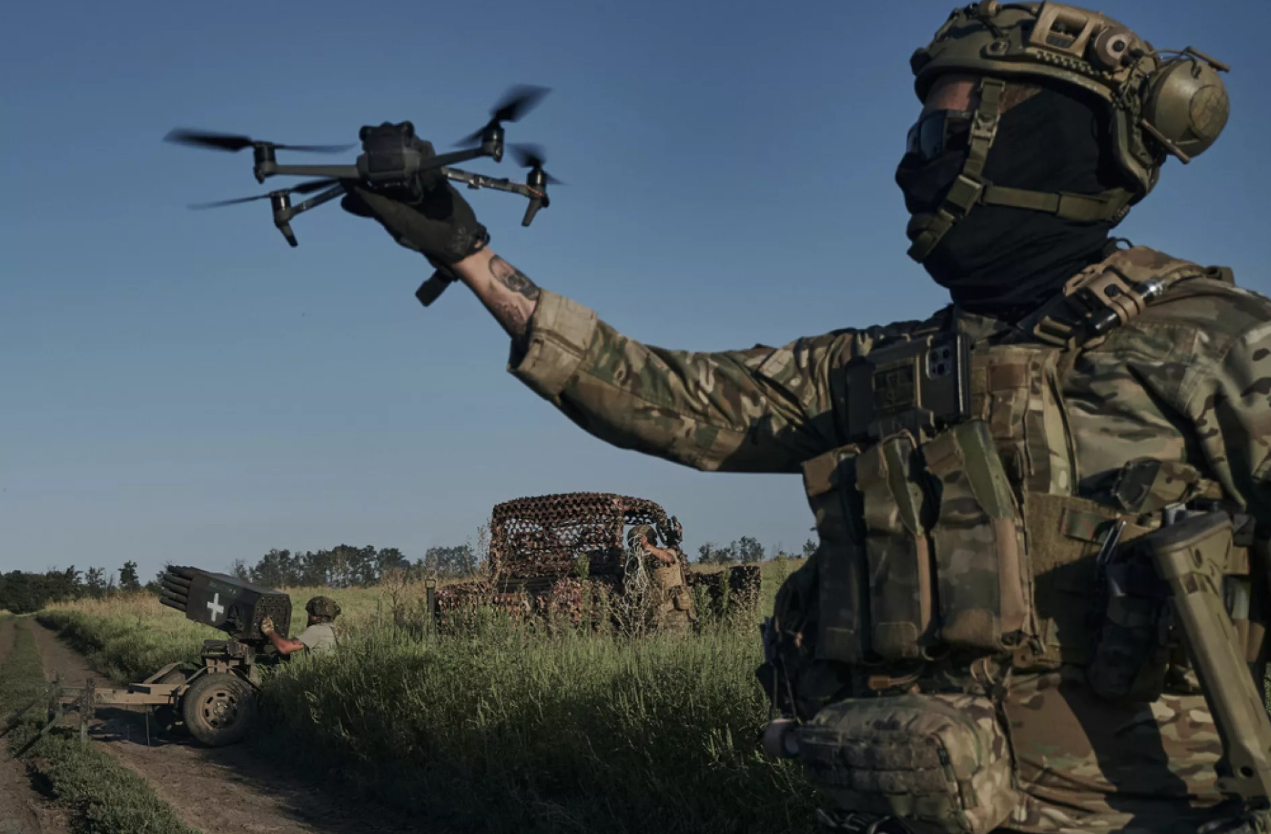Ukraine’s Drone Industry: Strategic Implications for Defense and Markets
How Ukraine’s Domestic Military Sector is Evolving and Reshaping Market Dynamics
A critical yet underreported shift is underway in the Russo-Ukrainian war: Ukraine’s growing self-sufficiency in military production, particularly in advanced drone technology, is reducing its reliance on foreign aid. This transformation, driven by battlefield necessity and technological innovation, is influencing both geopolitical stability and market trends in defense, technology, and energy sectors.
From Conventional Warfare to Drone Dominance
For much of the conflict, Ukraine’s military efforts have depended heavily on Western support, with the U.S. and its allies supplying tanks, armored vehicles, and advanced weaponry. However, over the past six to eight months, the nature of warfare has evolved, with drone technology playing an increasingly central role in military strategy.
Faced with numerical disadvantages in conventional weaponry, Ukraine has focused on cost-effective, domestically produced drone systems, enabling more sustainable military operations with reduced dependency on external aid.
Key Drivers of Ukraine’s Drone Strategy
• Technological Innovation – Ukrainian engineers have developed drones equipped with advanced navigation, AI-assisted targeting, and resilience against electronic warfare.
• Cost Efficiency – Compared to traditional military assets like tanks and fighter jets, drones are significantly cheaper to produce and deploy.
• Domestic Production – A growing proportion of drone manufacturing is conducted within Ukraine and through partnerships in allied nations, ensuring resilient supply chains.
While international assistance remains a factor, Ukraine’s ability to scale drone production signals the growing influence of unmanned warfare in modern military strategy.
Geopolitical and Market Implications
Ukraine’s increasing emphasis on self-sufficiency in drone warfare has broad implications for global security, defense markets, and energy sectors.
1. Geopolitical Considerations
• Increased Ukrainian Autonomy – A stronger domestic military industry provides Ukraine with greater leverage in diplomatic negotiations and long-term defense planning.
• Russia’s Strategic Response – This shift may lead Russia to further develop countermeasures and invest in its own unmanned systems, potentially prolonging the conflict.
2. Growth in Defense and Technology Markets
• Rising Demand for Drone and AI Defense Technologies – As Ukraine refines its unmanned aerial capabilities, interest in AI-driven targeting, cybersecurity, and autonomous warfare solutions is increasing across global defense markets.
• European Expansion – Companies in European defense and technology sectors that support Ukraine’s military-industrial development could see expanded contracts and investment opportunities, within the bounds of export regulations and international defense laws.
3. Market Risks and Uncertainties
• Energy Market Volatility – Historically, geopolitical instability has influenced oil and gas prices, and continued developments in the region may impact supply chains.
• The Global Spread of Drone Warfare – The increasing role of drones in asymmetric conflicts raises concerns about the proliferation of autonomous weaponry, potentially driving increased defense spending worldwide.
Strategic Considerations for Market Observers
As drone warfare continues to shape modern conflict, market analysts and industry participants may monitor developments in:
• Defense and AI Sectors – The increasing role of autonomous systems, unmanned technology, and AI-driven targeting solutions in defense spending.
• Geopolitical Risk Management – The potential for shifts in energy markets, sanctions policies, and regional stability.
• Regulatory Compliance in Defense Investments – Evaluating export controls, security restrictions, and global trade regulations that affect defense-sector collaborations.
While the geopolitical landscape remains fluid, the long-term trajectory of unmanned warfare suggests a lasting impact on security strategy, global defense markets, and emerging technologies.
Conclusion
Ukraine’s rapid development of a domestic drone industry has significantly enhanced its military capabilities while reducing reliance on foreign aid. This shift is influencing geopolitical dynamics and accelerating investment in defense, AI, and unmanned technology sectors.
As warfare becomes increasingly automated and cost-efficient, the implications for global security, military alliances, and financial markets are profound. For policymakers, industry leaders, and market analysts, understanding these trends is crucial to navigating the evolving landscape of modern conflict and its economic ripple effects.
Disclaimer: Important Legal and Regulatory Information
This report is for informational purposes only and should not be construed as financial, investment, legal, tax, or professional advice. The views expressed are purely analytical in nature and do not constitute financial guidance, investment recommendations, or a solicitation to buy, sell, or hold any financial instrument, including but not limited to commodities, securities, derivatives, or cryptocurrencies. No part of this publication should be relied upon for financial or investment decisions, and readers should consult a qualified financial advisor or regulated professional before making any decisions. Bretalon LTD is not authorized or regulated by the UK Financial Conduct Authority (FCA) or any other regulatory body and does not conduct activities requiring authorization under the Financial Services and Markets Act 2000 (FSMA), the FCA Handbook, or any equivalent legislation. We do not provide financial intermediation, investment services or portfolio management services. Any references to market conditions, asset performance, or financial trends are purely informational and nothing in this report should be interpreted as an offer, inducement, invitation, or recommendation to engage in any investment activity or transaction. Bretalon LTD and its affiliates accept no liability for any direct, indirect, incidental, consequential, or punitive damages arising from the use of, reliance on, or inability to use this report. No fiduciary duty, client-advisor relationship, or obligation is formed by accessing this publication, and the information herein is subject to change at any time without notice. External links and references included are for informational purposes only, and Bretalon LTD is not responsible for the content, accuracy, or availability of third-party sources. This report is the intellectual property of Bretalon LTD, and unauthorized reproduction, distribution, modification, resale, or commercial use is strictly prohibited. Limited personal, non-commercial use is permitted, but any unauthorized modifications or attributions are expressly forbidden. By accessing this report, you acknowledge and agree to these terms-if you do not accept them, you should disregard this publication in its entirety.



